Classic Art: Great Illustrators from Past Issues
Although The Saturday Evening Post is famous for its covers, some of the most striking art has been hidden inside the magazine.
“Squaw Fever,” art by Paul Rabut
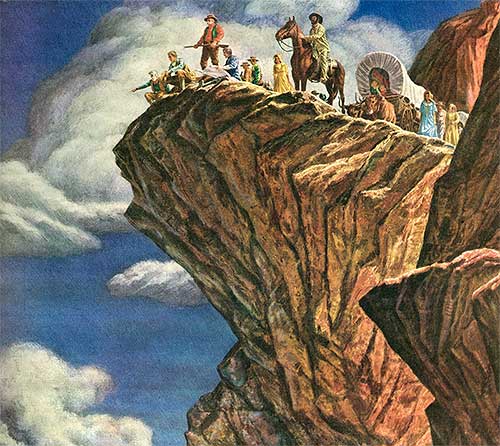
by Paul Rabut
From April 26, 1947
This dramatic painting by Paul Rabut appeared in the 1947 story “Squaw Fever” by Bill Gulick. The caption reads: “All you got to do is put wings on your wagons an’ fly ’em into the valley. Ain’t that right, captain?” Illustrations like this make us wonder where the original paintings ended up.
“Love and Alexander Botts,” art by Hy Rubin
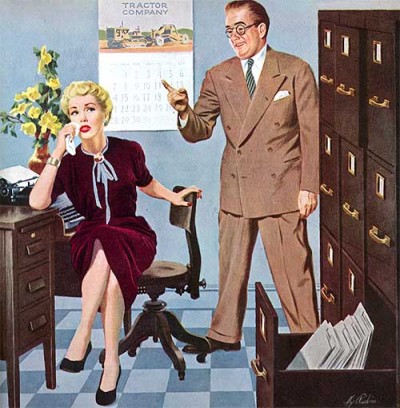
by William Hazlett Upson
From March 14, 1953
“Only desperate measures, he saw, could keep this girl from marrying the wrong man. It was a challenge the greatest of salesmen couldn’t resist.”
I don’t remember the Alexander Botts stories in the Post, but I’ve heard from many readers who do. The hardworking salesman for the Earthworm Tractor Company was created by William Hazlett Upson, and readers couldn’t wait for his next adventure. This 1953 Hy Rubin illustration is captioned: “‘For every problem there is always a solution,’ (Botts) said. ‘I will start now looking for it.’”
It would be a bit irritating to have a boss that darned cheerful while one is nursing a broken heart, but that’s Botts for you.
“The Cold-War Blonde,” art by Robert G. Harris
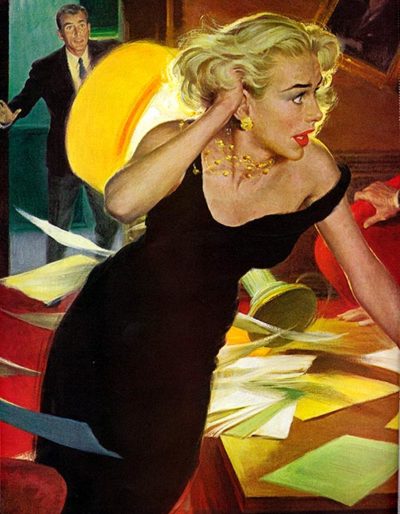
by Robert G. Harris bore
From September 26, 1959
It’s never good when there’s a Cold War raging, you’re rifling through a desk, and you get caught by the Russians–as this unfortunate young lady from the 1959 story “The Cold-War Blonde” by George Fielding Eliot did.
“She risked her honor for her country, and her methods were most unusual…” Whatever that means. The luscious artwork by Robert G. Harris bore the caption: “On the other side of the desk, ready to vault over it, crouched Zaspurov.” Can’t get anything by a danged Commie.
“Escapade,” art by Gilbert Bundy
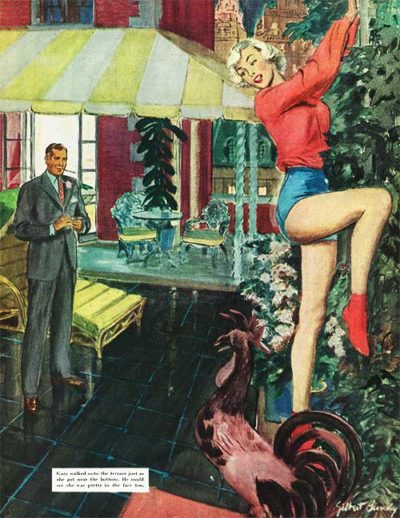
by Gilbert Bundy
From April 30, 1949
“Gary walked onto the terrace just as she got near the bottom. He could see she was pretty in the face too.”
Too? Apparently she was pretty from, er, other angles. How did people get themselves into these situations? Something about … she threw a boot at the house detective and it went over the terrace … or something. She is rather brazen, as we’ll see below.
“Escapade,” art by Gilbert Bundy
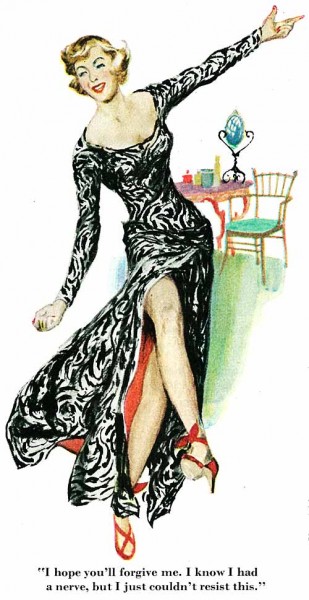
by Gilbert Bundy
From April 30, 1949
“He was trapped in his fiancee’s apartment with a strange girl wearing his fiancee’s gown. Could you talk your way out of that?”
Well, I’d love to hear him try. It seems the young lady made herself at home. “I hope you’ll forgive me. I know I had a nerve, but I just couldn’t resist this,” reads the caption of her trying on the gown. Uh, yeah, nervy would be one word for you, toots.
Beware of young ladies who climb over your terrace. This was from a 1949 story called “Escapade” by George Marion Jr.
“Stolen Goods,” art by Perry Peterson
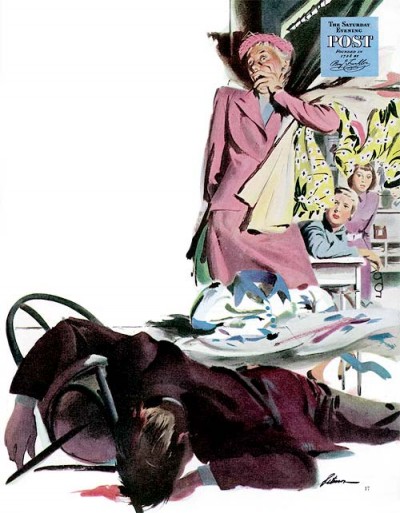
by Perry Peterson
From June 11, 1949
“She stared into the ladies’ dressing room and tried not to faint. It was terrifying to find a man in there—especially when he was dead.”
If three-way mirrors aren’t enough to put you off clothes shopping, this should do it. This is from a 1949 serial called “Stolen Goods” by Clarence Budington Kelland. The artwork was by Perry Peterson.
More inside illustrations to come!